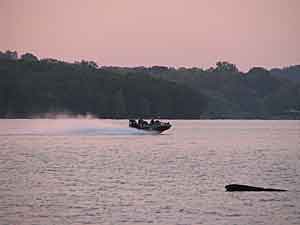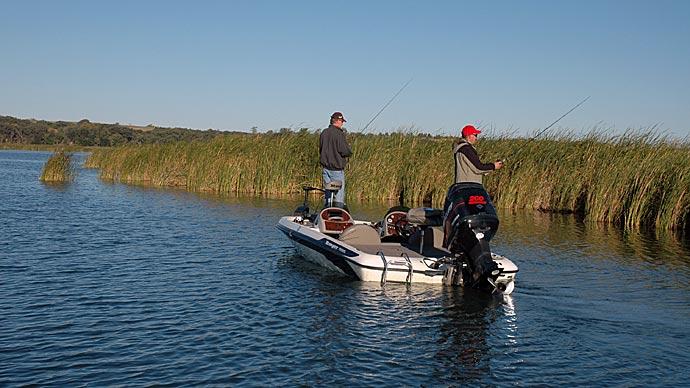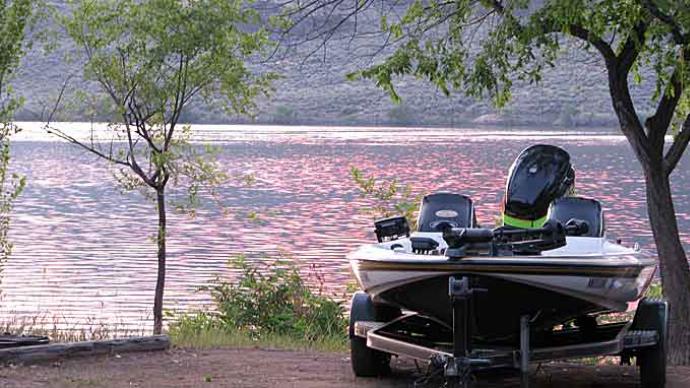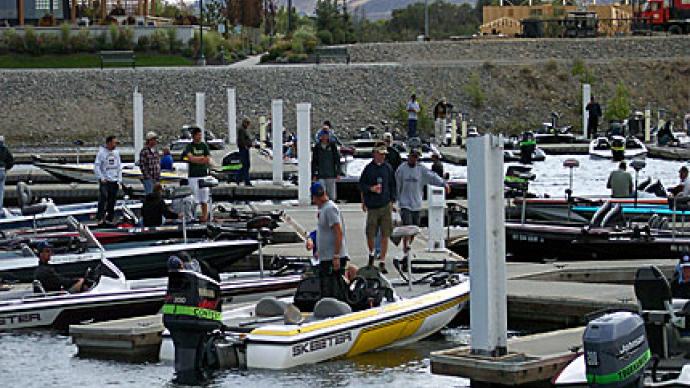
Fishing and boating naturally go together. But with today's increased leisure time and higher incomes, boating is enjoyed by more people than ever before. This means that it's becoming even more important to operate your boat safely and courteously. Safe boating is everyone's responsibility!
Boating Safety
- Never overpower your boat by using an outboard more powerful than that for which the boat is rated.
- Take and pass a boating-safety course when offered in your area.
- Make sure your bass boat's pedestal seats are lowered, especially in the front, so your visibility is not impaired. Never allow a passenger to ride on the pedestal seats while the boat is in motion.
- Make sure you and your passengers are wearing Coast Guard-approved personal flotation devices (PFDs) and that all required safety equipment is on board.
- Check that all clothing, tackle, and other loose items are secured.
- Do not operate the boat without an emergency engine cut-off switch ("kill switch") attached to your person while the big engine is running.
- Do not use drugs or alcohol while boating.
- Never "hot-dog" your boat. The safety of your passengers and others on the water is your responsibility.
- Exercise common courtesy when on the water. Avoid running too close to other boaters or fishermen. Use extreme caution in No-Wake zones and other posted areas.
- Watch where you're going. You can't keep both eyes on your flasher or graph and safely operate your boat.
Launching
Launching a boat is like riding a bike. Once you get the hang of it, it just comes naturally. Before heading to the lake with your new boat, practice backing it in and out of your driveway or garage. When you feel you know how sharply to turn the wheel and in which direction the trailer will move when you move the wheel a certain way, it's time to put the boat in the water.
Tip: The easiest way to remember which way the trailer turns when you turn your steering wheel is to place your hand on the BOTTOM of the steering wheel. Now, wherever you want the trailer to turn, you can just move your hand in that direction.
- Do not block the ramp. Pull into a zone free of traffic to prepare your boat for launching. Ensure all life jackets are aboard, the plug is secured, all tie-downs are removed, and the engine is tilted up for sufficient clearance. It is wise to keep the bow rope attached to a steep ramp until you are close to the water.
- Once you and your boat are ready, back slowly down the ramp. Watch for other boats, swimmers, etc. It is helpful to have another person stand by the ramp to ensure your path is clear and that the launch area is suitable and safe.
- If you are by yourself, attach a hand line to the bow eye, back up the trailer slowly until the stern begins to float, then get out of the vehicle (leaving the parking brake on) and gently push the boat off the trailer. Attach the line to a nearby dock or object until you can move your car.
- If you are with a friend, have them back the trailer slowly into the water with you at the boat's console. When the boat floats off the trailer, move the vehicle immediately to the parking area and move the boat to a safe shoreline or docking facility.
- Reverse these procedures when loading the boat back on the trailer. Remember, do not block the ramp!
Boat Positioning
Positioning a boat for effective fishing is greatly simplified by using a bow-mounted trolling motor. The adage is correct: It's easier to pull a chain than to push it! The electric motor allows you to silently maneuver your boat into position to afford you and your partner the best shot at fishing bass structure.
Here's how to position your boat in each situation:
| Deep submerged structure: | position the boat directly over the structure and fish vertically. |
| Flat or 45-degree bank: | position the boat to slice-cast toward the bank. |
| Steep vertical structure: | position the boat so you can fish parallel to the structure at the depth the fish are using. |
| Point: | position the boat to follow the contour of the point around the depth the fish are using. |
| Heavy current: | use front and rear anchors to hold the boat above the area you intend to fish, then cast upstream, letting the bait/lures flow naturally with the current into the productive zone. |
Basic Bass Boat Equipment
- Trolling motor, preferably bow-mounted for maximum control (make sure it is powerful enough to move your boat satisfactorily).
- Surface-temperature gauge to monitor changes in water temperature and help you predict fish location.
- Tachometer.
- Battery & fuel gauges.
- Bilge pump.
- Engine safety shut-off switch ("kill switch").
- Depthfinder (flasher, graph, LCD).
- All required safety equipment.
- Anchors and line.




